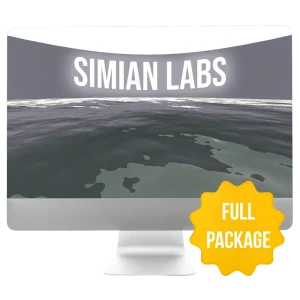$0.00
20 in stock
The NMR (nuclear magnetic resonance) Contrast Agent Analyzer is a device that uses NMR spectroscopy to measure the relaxation times of a substance that has been labeled with a contrast agent. A contrast agent is a substance that is introduced into the body to improve the visibility of certain tissues or structures during medical imaging procedures.
The NMR relaximetry contrast agent analyzer is used to quantitatively analyze the relaxation times of the contrast agent in order to obtain information about the tissues or structures being imaged. This information can be used to diagnose and monitor various medical conditions, such as cancer, inflammation, and tissue damage.
ConductScience offers the NMR Contrast Agent Analyzer.

Niumag Suzhou is a leading provider of advanced scientific and laboratory instruments specializing in magnetic resonance imaging (MRI) and related technologies. The company focuses on developing high-performance MRI systems, including preclinical imaging solutions for research and diagnostics



NMR Contrast Agent Analyzer is a device or system used to analyze the relaxation properties of NMR contrast agents. NMR contrast agents are typically used in NMR imaging to enhance the contrast between different tissues or structures in the body. By measuring the relaxation properties of the contrast agents, such as the T1 or T2 relaxation time, the analyzer can provide information about the effectiveness and suitability of the contrast agents for different applications. This information can be used by researchers and clinicians to select the most appropriate contrast agent for a given imaging procedure. NMR Contrast Agent Analyzers are typically used in research or clinical settings, and can be standalone devices or integrated into larger NMR imaging systems.
Hardware Component | Quantity |
|---|---|
Magnet Unit_Magnet cabinet (with automatic sampling module) | 1 |
Magnet Unit_Magnet | 1 |
RF unit_RF unit box | 1 |
RF unit_Preamplifier | 1 |
RF unit_RF power amplifier | 1 |
RF unit_Magnet temperature control | 1 |
RF unit_Heating system | 1 |
RF unit_Power supply system | 1 |
Spectrometer unit (including ICC) Industrial control computer | 1 |
Spectrometer unit (including ICC) Pulse sequence generator (PSG) | 1 |
Spectrometer unit (including ICC) Direct digital frequency Synthesis (DDS) | 1 |
Spectrometer unit (including ICC) Analog-to-digital converter (ADC) | 1 |
Probe coil (FLAT) Ø 20 mm | 1 |
Software Component | Quantity |
|---|---|
Contrast Agent Analysis Software | 1 |
Accessory Component | Quantity |
|---|---|
Software USB | 1 |
Test tube stand | 1 |
USB Splitter | 1 |
Debugging tools_Special tools | 1 |
Debugging tools_ 50Ω terminal | 1 |
Debugging tools_BNC adapter assembly | 1 |
Debugging toolsTesting line | 2 |
Fuses | 5 |
Computer peripherals_LCD display | 1 |
Computer peripherals_ Mouse, keyboard | 1 |
1. Magnet type: permanent magnet; Magnetic field intensity: 0.50 ± 0.01T;
2. Magnetic field uniformity: ≤ 30 ppm ;
3. Magnetic field stability: ≤ 300 Hz/Hour;
4. Magnet temperature control: dual system of nonlinear precise temperature control, temperature tunable
from 25 °C-35 °C;
5. RF field: pulse frequency: 1 – 30 MHz; frequency control accuracy: 0.1 Hz; Puls accuracy: 10 ns;
6. RF power amplifier > 300 W;
7. Maximum bandwidth: 5000KHz;
8. Probe:
Room Temperature 18A coil with inner diameter of 20 mm;
Minimum TE: 100μs;
9. Maximum echo number is 18,000;
10. Based on PCI bus industrial control computer platform, 8-core CPU, I7 processor, 8G DDR memory, 1T hard
disk.
The NMR Contrast Agent Analyzer is widely used in research and medical settings for evaluating the effectiveness of MRI contrast agents. By measuring the relaxation times and relaxation rates of these agents, researchers, and medical professionals can assess the performance of these agents and optimize MRI imaging protocols.
The NMR Contrast Agent Analyzer consists of a superconducting magnet that generates a strong magnetic field, a radio-frequency transmitter and receiver, and a computerized data acquisition system. The system also includes specialized software designed to analyze the data collected during the contrast agent analysis.
The Relaximetry NMR Contrast Agent Analyzer is a powerful research-grade instrument used for the analysis of magnetic resonance imaging (MRI) contrast agents. This equipment is a standalone device that utilizes nuclear magnetic resonance (NMR) technology to analyze the physical and chemical properties of contrast agents used in MRI.
The NMR Contrast Agent Analyzer is a powerful research tool that provides valuable insights into the properties of MRI contrast agents. Some of the strengths of this equipment include its high sensitivity, accuracy, and reproducibility. Additionally, it can be used to analyze a wide variety of contrast agents, allowing researchers and medical professionals to explore a range of different applications.
One of the limitations of this equipment is its high cost, which may make it difficult for smaller research labs or medical facilities to acquire it. Additionally, NMR Contrast Agent Analyzer requires specialized training and expertise to operate, which may limit its accessibility to researchers and medical professionals who are not trained in NMR technology.
| Brand | Niumag Suzhou |
|---|---|
| Field of study | Biomedical Engineering, Chemistry, Medical Imaging, Pharmacology |
| Product Application | Analytical Instruments, Laboratory Equipment, Life Sciences, Magnetic Resonance Imaging (MRI), Medical Diagnostic Equipment, Pre Medical Analysis |
| Volts | 110V, 220V |
You must be logged in to post a review.
There are no questions yet. Be the first to ask a question about this product.
Monday – Friday
9 AM – 5 PM EST
DISCLAIMER: ConductScience and affiliate products are NOT designed for human consumption, testing, or clinical utilization. They are designed for pre-clinical utilization only. Customers purchasing apparatus for the purposes of scientific research or veterinary care affirm adherence to applicable regulatory bodies for the country in which their research or care is conducted.
Reviews
There are no reviews yet.